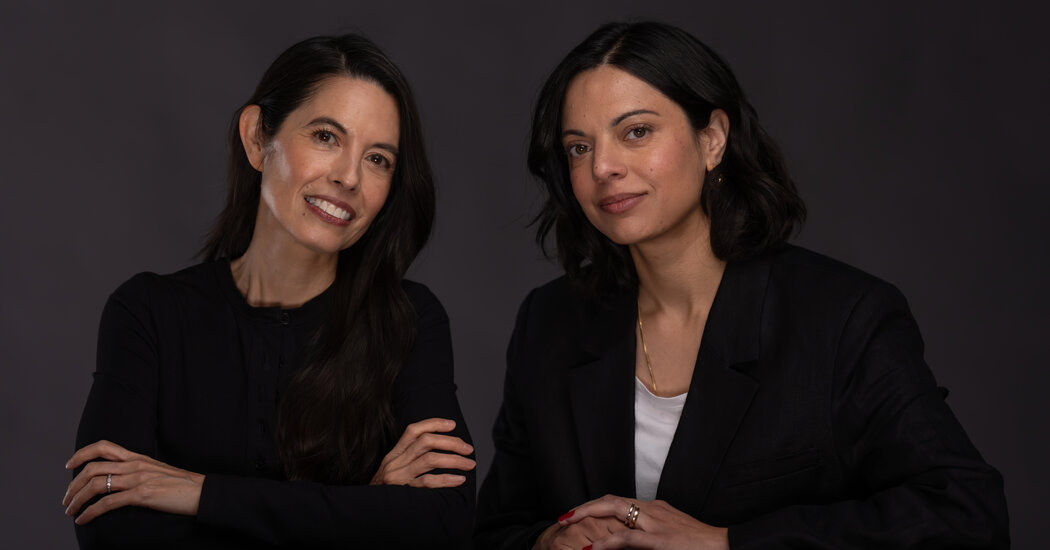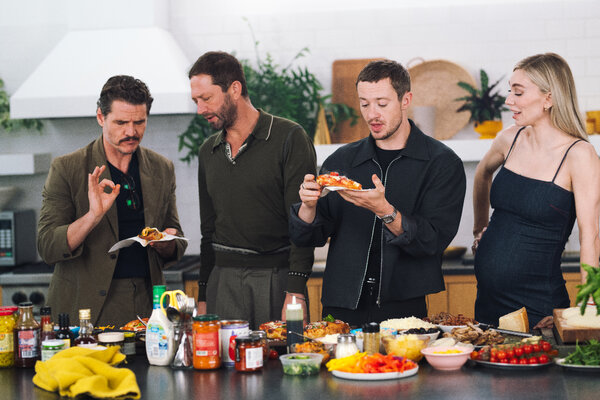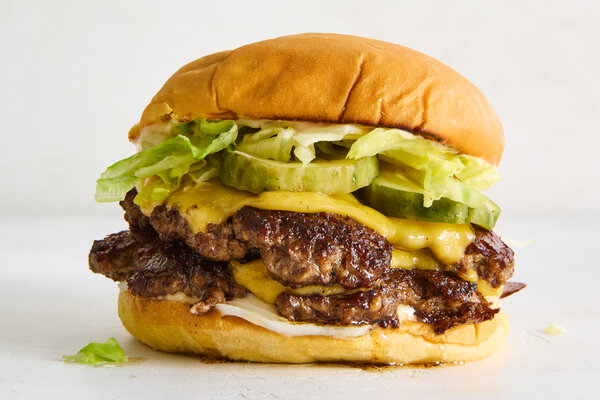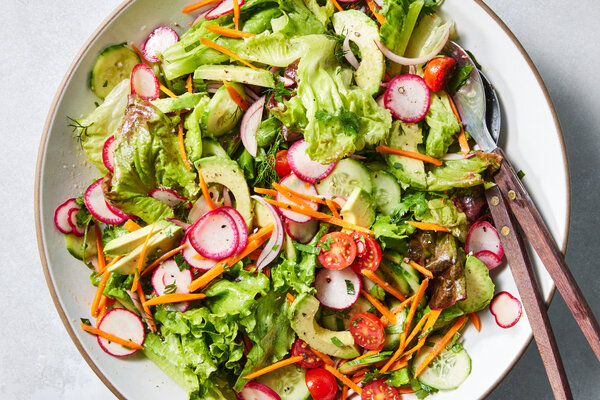This morning, The Times announced that Tejal Rao and Ligaya Mishan are our new chief restaurant critics. It’s the first time the job is being shared by two people and the first time we’re not trying to hide their faces. Also, they will be filing full-length, starred reviews from around the country, not just New York City.
You can read more about how it will all work here. Tejal lives in Los Angeles, and joined The Times in 2016 after working as a restaurant critic at The Village Voice and Bloomberg News. Ligaya, who wrote our Hungry City restaurant column from 2012 to 2020 and has been an Eat columnist at the Times Magazine and a writer at large for T Magazine, is in Manhattan. I asked them about their early restaurant memories, how they read menus, what they eat at home and what scares them about the gig.
First of all, congratulations! This is both a dream job and very daunting. How’s it feel? What are you most looking forward to — and what are you most worried about?
Tejal: It’s exactly that: dreamy and daunting. I have a running list of all the things I’m worried about, and my therapist is on vacation this week — I’ll save it for her!
Ligaya: What I’ve always loved most in writing about restaurants is how much I learn. It’s an entry point not only to a particular cuisine, but to a part of New York — and, now, of America — I might not otherwise have a chance to know.
As for worries: I want to do justice to every place I visit, and I hope I will. It doesn’t matter that I’ve been a writer for years — the blank page is always slightly terrifying. I’ll try to keep in mind what the head of my daughter’s school once told me: “I don’t worry. I do the work.”
What are your earliest restaurant memories? Did you have a favorite spot growing up? Do your families have a special-occasion go-to now?
T: My parents took my brother and me to nice restaurants a few times a year, starting when we were really young — it was how we celebrated anything and everything. My dad studied the Michelin guide when we lived in France, and sometimes we’d drive extremely out of the way for a very long lunch at a dusty auberge. I loved the glamour and theatrics of those places, but I also thought that Maru Bhajia, this no-nonsense spot my grandmother would take us to in Nairobi for hot fried potatoes and chutney, was the best restaurant in the world.
L: When I was growing up in Hawaii, we didn’t eat out that much. Sometimes after church on Sundays we’d get Chinese at the strip mall — American Chinese, General Tso’s chicken and beef & broc, off a lazy susan. On special nights we’d go to Columbia Inn, a diner on Kapi‘olani Boulevard, where I was mesmerized by the maraschino cherries. (It closed in 2011.)
A decade ago, we lived in Fort Greene and went to Roman’s once or twice a week. The menu was always different and always glorious. Now we live too far away. I miss it still.
T: Dining out is tough with a 1½-year-old! My daughter needs food immediately and also plenty of room to wiggle and run and perform all her dance moves and smear some cheese on me and ooh is that a bird? My favorite place to go as a family in Los Angeles at the moment is Komal, in Mercado La Paloma, where the food is absolutely delicious and the space is really accommodating. We always get the molotes de platano in black mole with a side of tortillas, the squash blossom quesadilla and any specials.
I have this theory that humanity is divided into two groups: people who have worked in food service, and people who haven’t. And that those who have are … better. I’m assuming you’ve both had restaurant jobs — what’d you learn?
L: After graduate school, I worked five nights a week as a hostess at Sunset Grill, a California-style bistro in Honolulu, while holding down an office job by day. I don’t think I was particularly good at the job; I was constantly rattled by how unkind guests could be, how insistent on exercising power. I truly admire the patience of servers who understand that sometimes people are just unhappy and need to feel taken care of.
T: All through college I was a barista at the Starbucks on Charles Street in Boston, and after I graduated, I was a cook in a bunch of restaurants. I did everything: cleaning monkfish livers and razor clams, washing salad leaves and searing meat, laminating croissant dough on the night shift and spinning ice creams. For years after I started writing, I was still cooking on the side to get by.
I learned how much labor goes into every meal and how many people come together to make it happen. I mean, I’d learned that lesson at home, watching the cooks in my family, and helping them work for hours on something that would be gone in minutes, but I learned it at a much deeper level working in kitchens.
A superpower I’m trying to cultivate is knowing the best thing to order on any menu. What clues do you look for?
T: If I’m out for fun, it’s a rare chance to order exactly what I feel like eating at that moment, instead of strategizing. But I can’t help myself! I’m always looking to see what a restaurant does particularly well, or where it’s reaching toward something new or different.
L: Often I’ll just ask our server which dishes are closest to the chef’s heart and express most fully what the chef is trying to do.
So, we’re giving up any pretense of keeping your identities secret. Thoughts on the whole anonymity thing?
L: I liked being anonymous! I’m still going to use fake names and hope I won’t get recognized; I don’t want people to feel pressure or like they have to perform in some way just because a critic’s in the house.
On the other hand, I love the idea that women who look like me and Tejal are about to get the best service of their lives. Filipino and Indian women, now is your time.
T: Ha! I love that image. I’ll always be making an effort to get in and out of restaurants undetected and to avoid special treatment, but I’m excited to be myself out in the world and online, to connect with readers, do more local events and just be part of my community. Anonymity can be isolating.
Do you try to cook at home things you had in restaurants?
T: The more I’m out at restaurants, the more I want simple home cooking that doesn’t feel like restaurant food! That said, Kismet’s miso poppy dressing is on regular rotation here at the moment, and I’m often bringing home leftovers and turning them into fried rice or starting another meal with them.
L: My husband is the spectacular cook in the family. He does this alchemy with butter, soy sauce and Megachef fish sauce, a technique he picked up at Le Rigmarole in Paris. (It’s particularly great with mushrooms.) And he once reverse-engineered the famous endive salad from Estela and turned it into a kind of vegetarian laab.
You’re the first women in the role since Ruth Reichl left The Times in 1999. I’m interested in whatever you have to say about that — as well as your thoughts on Callie Hitchcock’s recent essay about the perils of being a woman dining alone.
L: Ruth is a legend and one of the most charismatic people I’ve ever met. The energy in a room changes when she walks into it; I don’t know how she ever went unnoticed, even in disguise. I’m honored to have a chance to carry on her legacy — and the great Mimi Sheraton’s as well. And of course there have been and are amazing female restaurant critics elsewhere in New York and across the country and the world, including Lyndsay C. Green at the Detroit Free Press, who was a Pulitzer finalist, and Besha Rodell at The Age in Melbourne, Australia, who has a memoir out, “Hunger Like a Thirst.”
Callie Hitchcock’s piece is fascinating. I always bring a book when I dine alone, and I guess I get so lost in what I’m reading, I don’t notice pitying glances …
T: I don’t dine alone that often, but it feels really luxurious when I do. I tend to choose places where I know I’ll feel comfortable and taken care of and yes, I always bring a book. I was just thinking I want to reread “Garlic and Sapphires,” which Ruth wrote about her years as The Times’s restaurant critic.
I know people ask critics this all the time, but how do you deal with having to eat so much? Like, what’s your workout regime?
L: I run 10,000 miles a week. Kidding! It’s more like 40. And I do strength training. And this past January I made the first New Year’s resolution that I have ever kept: to do push-ups every day. I’m up to 36.
T: I love my gym and go a few days a week for strength training. I also have a rowing machine in my backyard. When the eating is athletic, I have to be, too.
OK, so today’s a pretty big deal in your careers. Where will you go for dinner tonight to celebrate?
L: Although we’re not anonymous, I don’t think we can give away our dining plans! I will say that the best celebration I can imagine would be a quiet night at home with my husband and my daughter before the storm begins, eating whatever beautiful meal my husband dreams up, as he’s the best chef I know.
T: Top secret! I’m planning a 4 p.m. FaceTime with my parents and my brother so we can all drink something cold and bubbly together before dinner, though.




